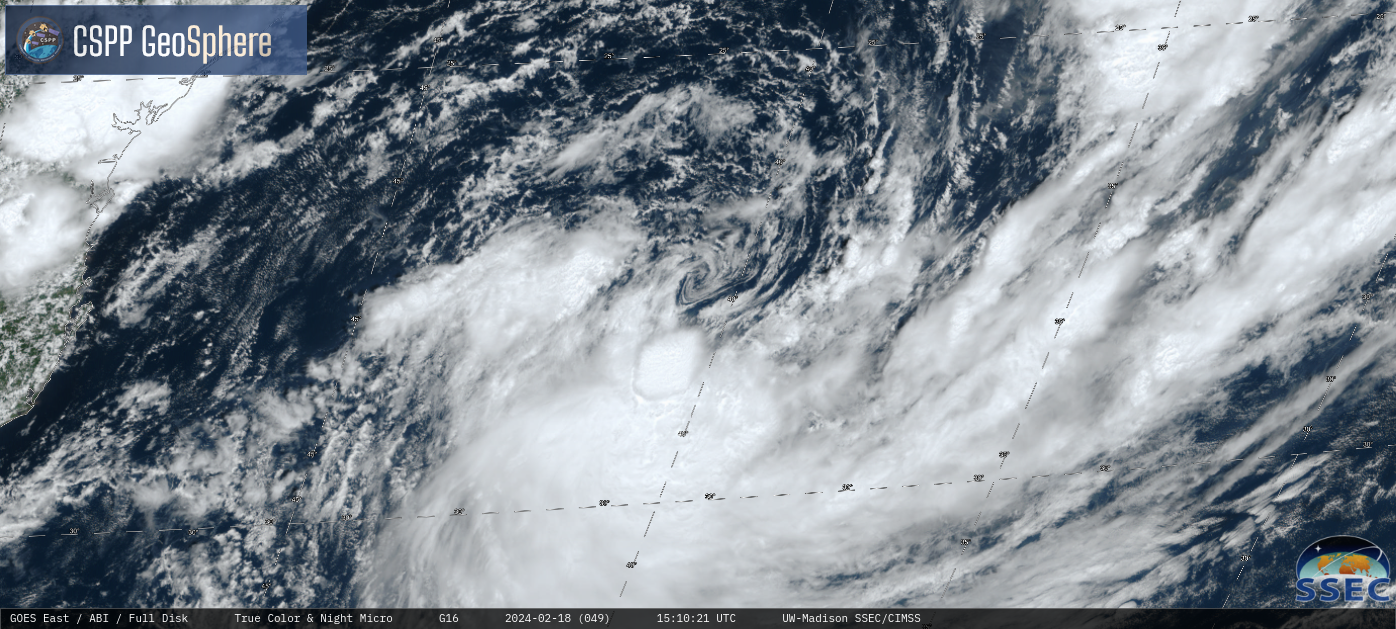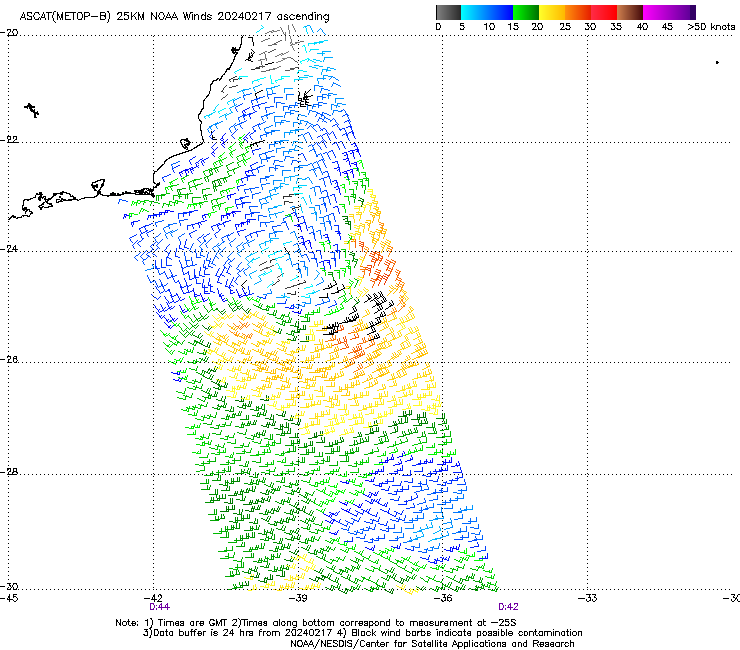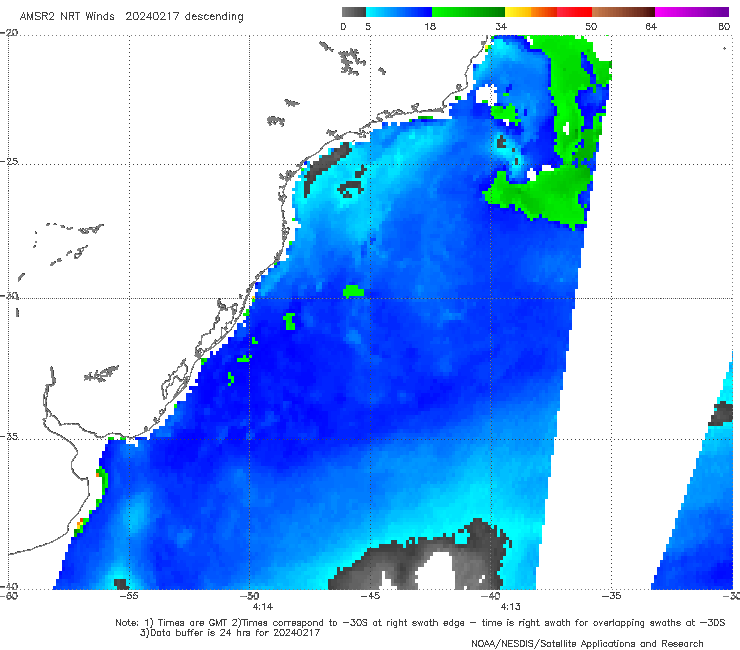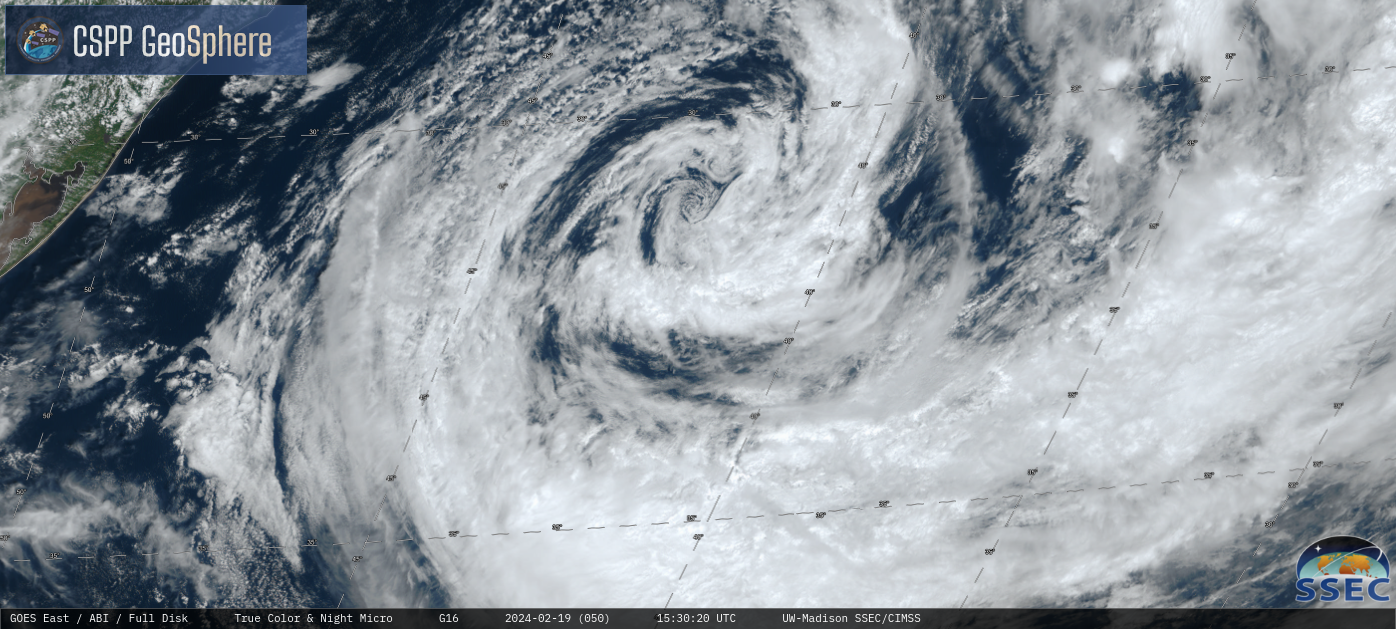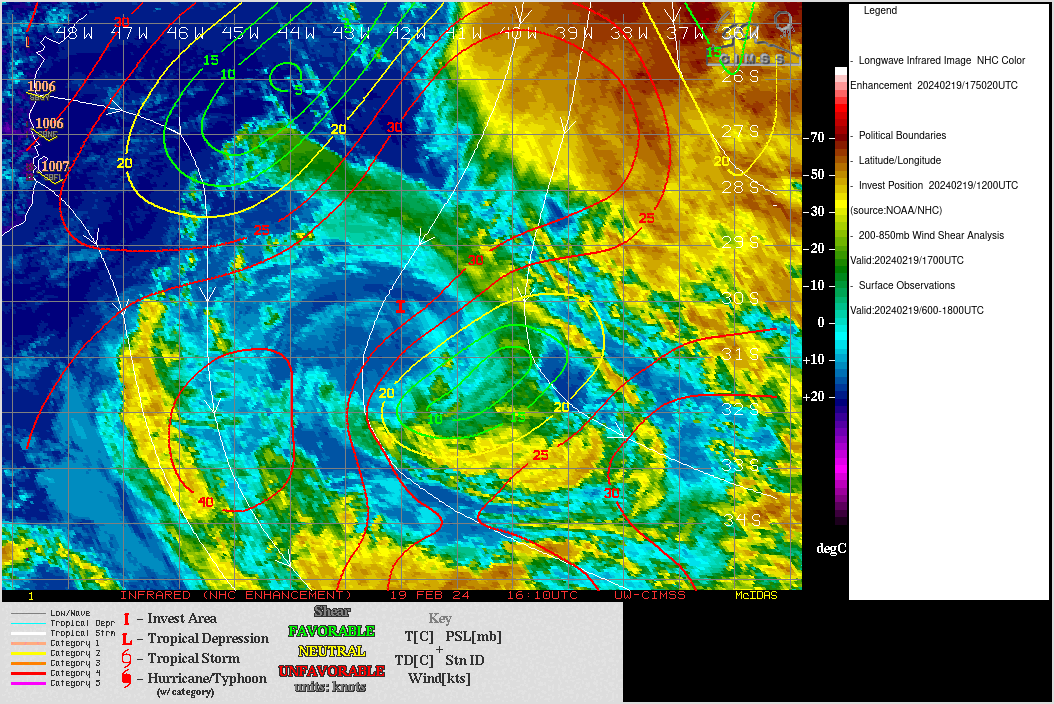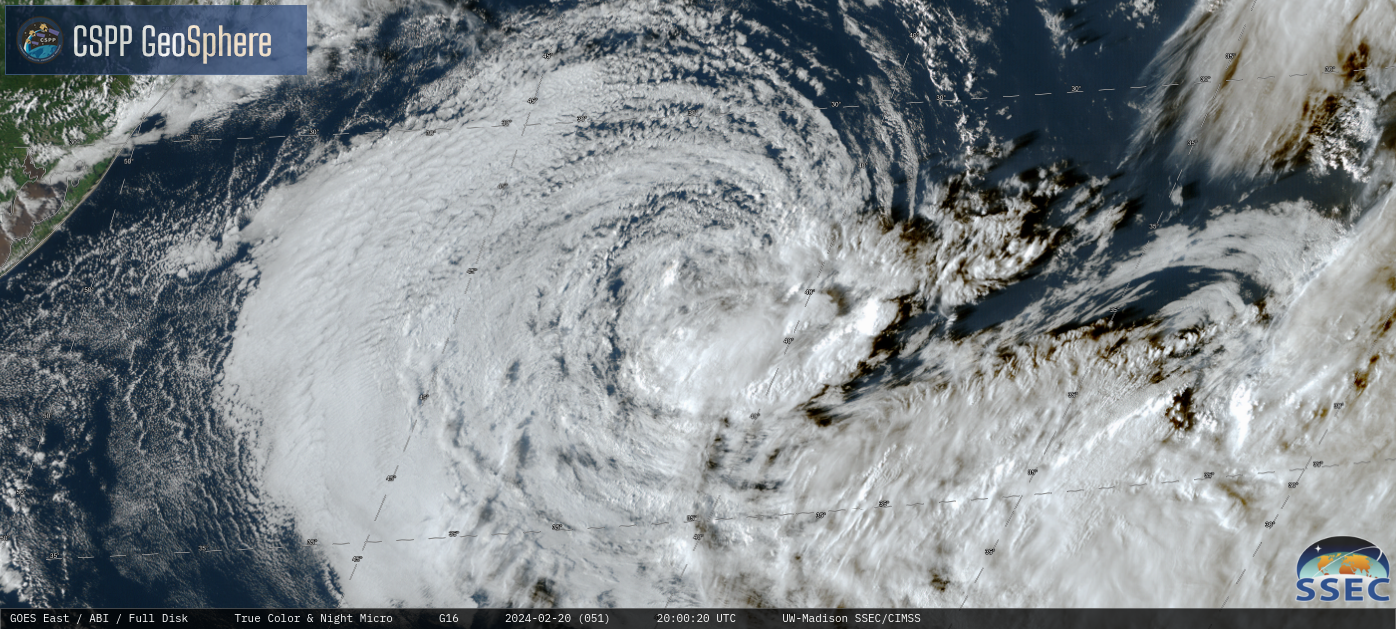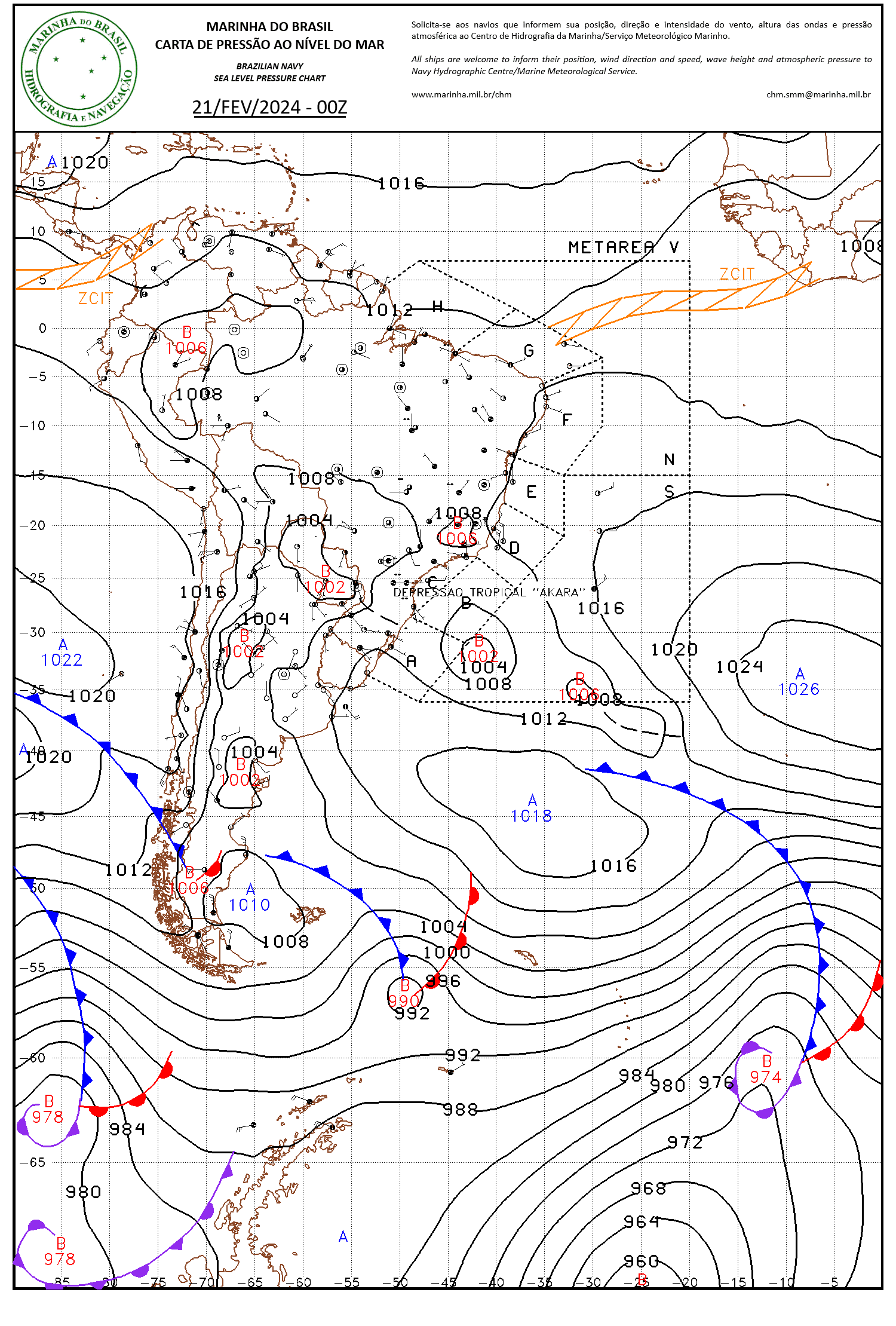Tropical Storm Akará develops off the southeast coast of Brazil
GOES-16 True Color RGB images from the CSPP GeoSphere site (above) showed multiple mesoscale vortices embedded within the exposed Low-Level Circulation Center (LLCC) of a Tropical Depression off the southeast coast of Brazil on 18 February 2024. This disturbance continued to organize and gradually intensify during the day and into the evening hours — with part of the LLCC being drawn beneath deep convection in the SW quadrant of the system — becoming Tropical Storm Akará at 0000 UTC on 19 February (surface analysis | warning text). Tropical Storms in the South Atlantic are relatively rare — the last was Tropical Storm Iba in 2019.A sequence of Meteosat-10 Water Vapor images with an overlay of deep-layer wind shear from the CIMSS Tropical Cyclones site (below) indicated that Akará was located within a corridor of relatively low shear — a factor that favored intensification. Sea Surface Temperature values in the area where Akará first developed (near 25ºS latitude, 40ºW longitude) were around 27ºC.
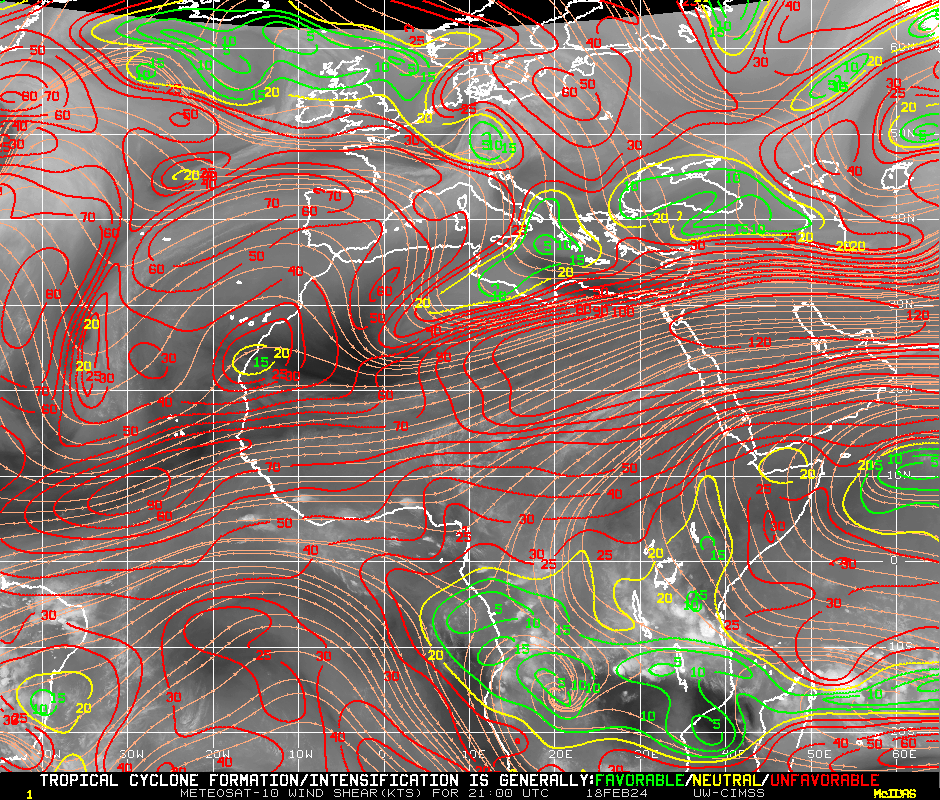
Meteosat-10 Water Vapor images, with an overlay of deep-layer wind shear streamlines and contours, on 18 February [click to play animated GIF | MP4]
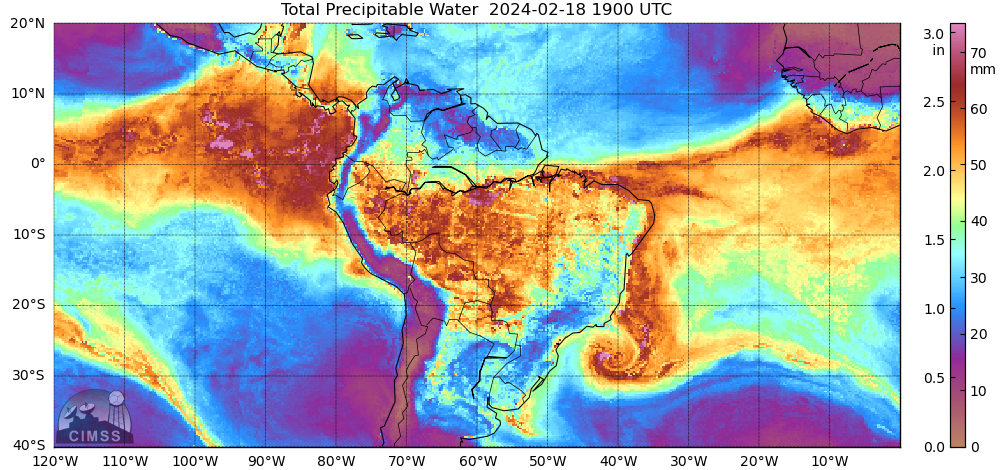
MIMIC Total Precipitable Water product, from 13-18 February [click to play animated GIF | MP4]
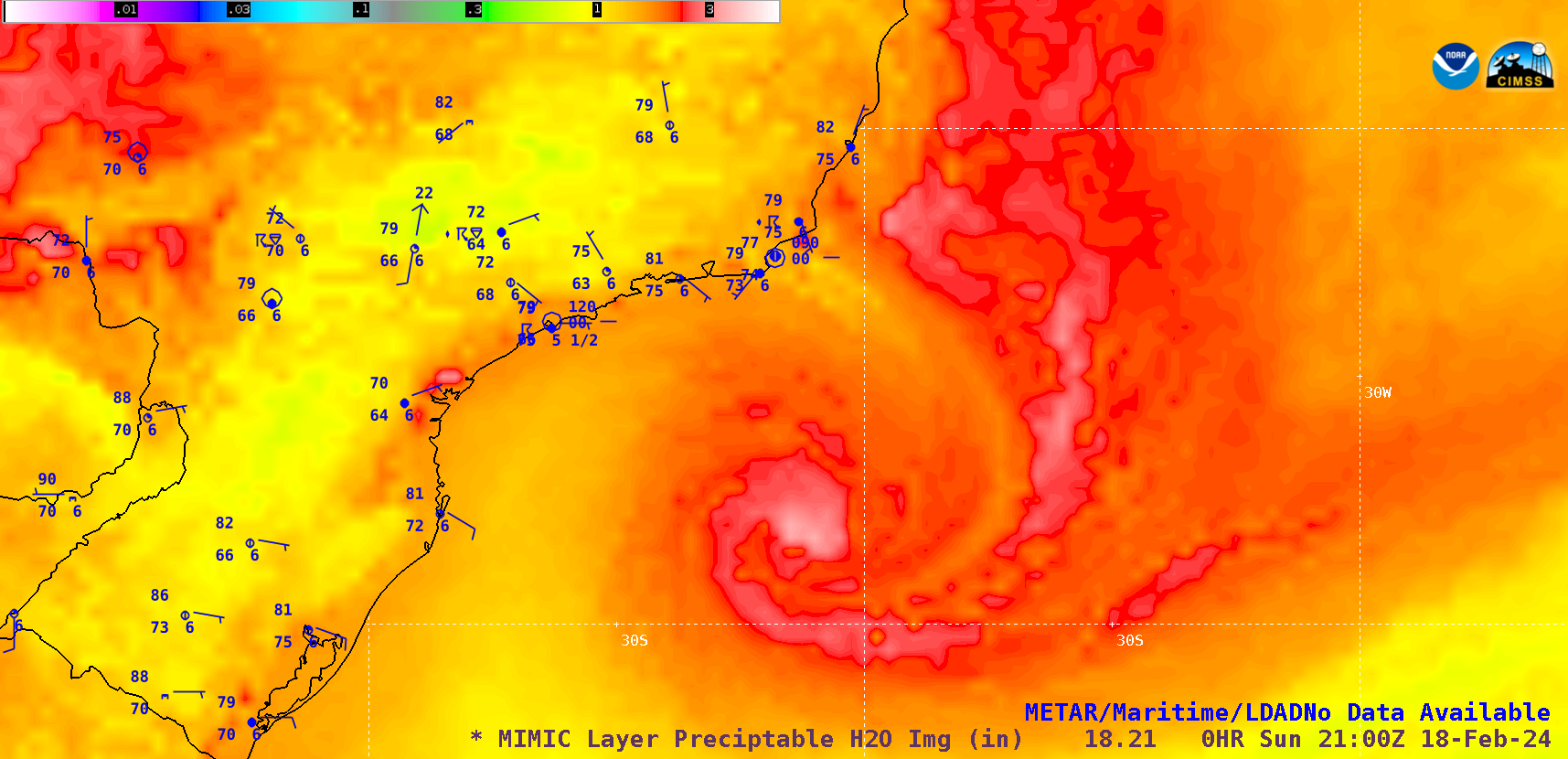
MIMIC Total Precipitable Water product with plots of surface and ship reports, from 13-18 February [click to play animated GIF | MP4]
Significant Wave Height values derived by Sentinel-3A increased from 11.27 ft at 1216 UTC on 17 February to 14.98 ft at 0038 UTC on 18 February (below) — along the southern periphery of what was still a subtropical depression.
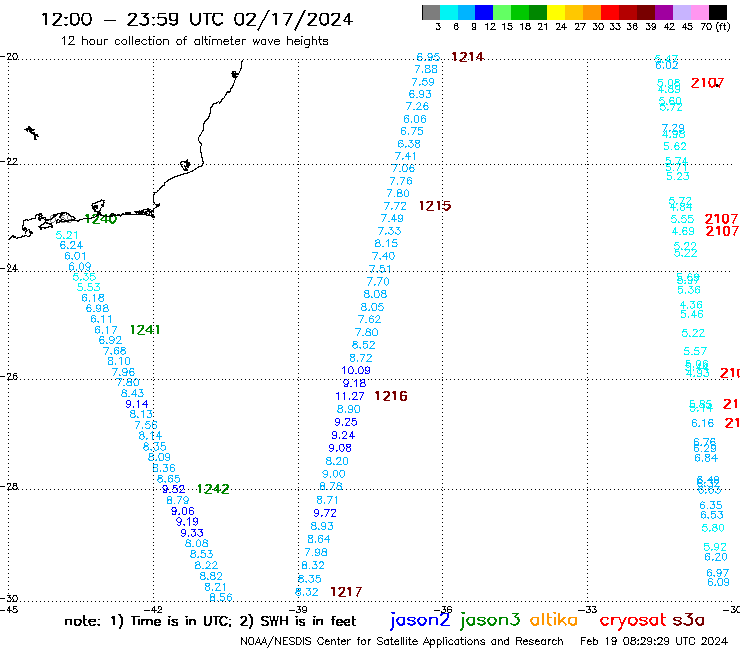
Significant Wave Height derived from Sentinel-3A, at 1216 UTC on 17 February and 0038 UTC on 18 February
===== 19 February Update =====
GOES-16 True Color RGB images (above) showed that there was a notable lack of sustained deep convection near the exposed LLCC on 19 February — this was likely due to an increase in shear in the vicinity of Akará (below). The tropical storm had also moved far enough south to be located over colder water, where Sea Surface Temperature values were only around 25ºC.===== 20 February Update =====
For the second consecutive day, sustained deep convection failed to develop near the exposed LLCC of Akará (above). The MIMIC TPW product (below) indicated that a ribbon of dry air had begun to wrap into the circulation of the tropical storm, beginning on 19 February.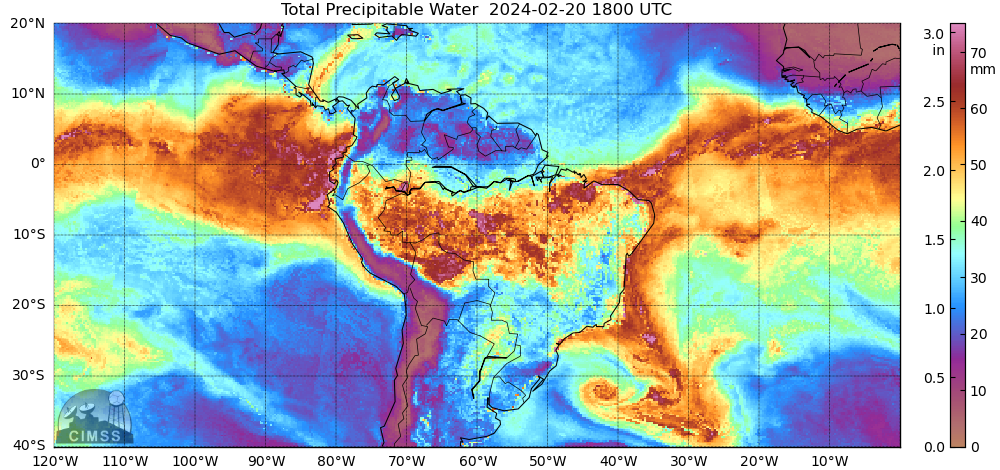
MIMIC Total Precipitable Water product, from 13-20 February [click to play animated GIF | MP4]


